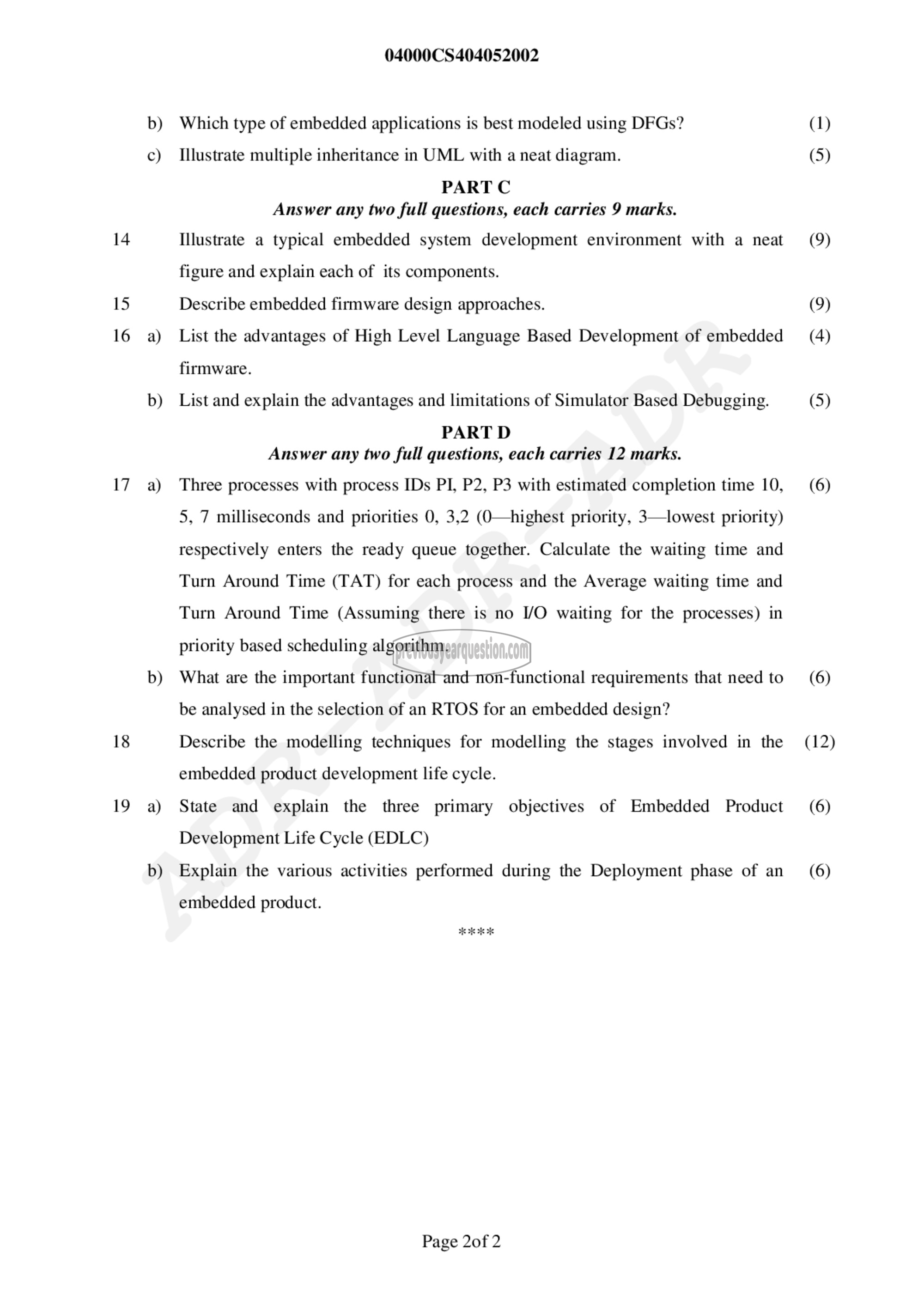APJ ABDUL KALAM TECHNOLOGICAL UNIVERSITY Previous Years Question Paper & Answer
Semester : SEMESTER 8
Subject : Embedded Systems
Year : 2020
Term : SEPTEMBER
Branch : COMPUTER SCIENCE AND ENGINEERING
Scheme : 2015 Full Time
Course Code : CS 404
Page:2
14
15
16
17
18
19
b)
௦)
a)
b)
a)
b)
a)
b)
04000CS 404052002
Which type of embedded applications is best modeled using DFGs?
Illustrate multiple inheritance in UML with a neat diagram.
PART C
Answer any two full questions, each carries 9 marks.
Illustrate a typical embedded system development environment with a neat
figure and explain each of its components.
Describe embedded firmware design approaches.
List the advantages of High Level Language Based Development of embedded
firmware.
List and explain the advantages and limitations of Simulator Based Debugging.
PART D
Answer any two full questions, each carries 12 marks.
Three processes with process IDs PI, P2, P3 with estimated completion time 10,
5, 7 milliseconds and priorities 0, 3,2 (0O—highest priority, 3—lowest priority)
respectively enters the ready queue together. Calculate the waiting time and
Turn Around Time (TAT) for each process and the Average waiting time and
Turn Around Time (Assuming there is no I/O waiting for the processes) in
priority based scheduling algorithm.
What are the important functional and non-functional requirements that need to
be analysed in the selection of an RTOS for an embedded design?
Describe the modelling techniques for modelling the stages involved in the
embedded product development life cycle.
State and explain the three primary objectives of Embedded Product
Development Life Cycle (EDLC)
Explain the various activities performed during the Deployment phase of an
embedded product.
Page 2of 2
(1)
(5)
(9)
(9)
(4)
(5)
(6)
(6)
(12)
(0)
(6)
